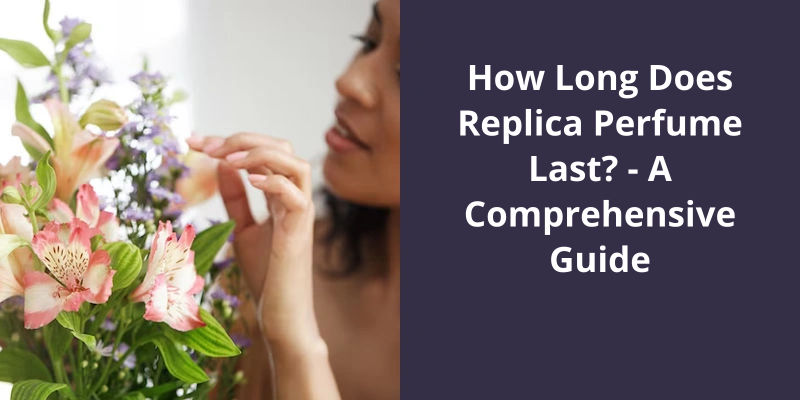As we delve deeper into this topic, it becomes evident that our beloved fragrances have the potential to be more than just pleasant scents; they may encompass a complex amalgamation of chemical compounds that can permeate our air, water, and even our bodies.

Is Fragrance a Chemical Compound?
Perfume is indeed a combination of various fragrance chemicals, which are organic compounds that have the ability to volatilize or vaporize into the air. These fragrance chemicals are carefully selected and blended to create a specific scent that appeals to our olfactory senses. However, we seldom pause to recognize the fact that scents are essentially chemical compounds.
With this understanding, the question arises: can perfume be considered a chemical contaminant? It’s important to note that the term “contaminant” typically refers to substances that negatively impact the environment or human health. While fragrance chemicals themselves may not be inherently harmful, certain individuals may experience adverse reactions to them.
Additionally, there’s ongoing debate surrounding the potential long-term effects of repeated exposure to fragrance chemicals, as some studies suggest a link to respiratory issues and hormonal disruptions.
Moreover, the widespread use of perfumes in various products, including personal care items, cleaning agents, and air fresheners, has led to concerns about indoor air quality.
Fragrances have long been associated with beauty and luxury, but there’s a hidden downside to these scented products. Synthetic chemicals found in many perfumes can pose serious risks to human health. Among the culprits are petroleum-based ingredients, such as phthalates, which can disrupt our hormonal balance, and carcinogens like benzophenone and styrene. Furthermore, numerous individuals, both young and old, experience allergic reactions due to the presence of fragrance chemicals.
What Ingredients Make Perfume Toxic?
Perfume, with it’s alluring scents and appealing packaging, has become an integral part of our daily lives. However, beneath the surface, some ingredients in these fragrances can pose potential risks and impacts on our health. Among the vast array of chemicals used in perfumes, some are synthetic and derived from petroleum, making them potentially harmful.
One group of concerning chemicals found in fragrances is phthalates. These compounds are known as endocrine disruptors, meaning they can interfere with the hormonal balance in our bodies. Studies have linked exposure to phthalates with various health issues, such as reproductive problems, developmental disorders, and an increased risk of certain cancers. The presence of phthalates in perfume raises questions about the long-term effects of regular use and the potential impact on human health.
Another class of chemicals found in fragrances that raises concern are benzophenone and styrene. Both of these substances have been classified as carcinogens, meaning they’ve the potential to cause cancer. Benzophenone is often used as a UV filter in perfumes, while styrene is used as a solvent in some fragrance formulations. Prolonged exposure to these chemicals, either through inhalation or skin contact, may increase the risk of developing cancer over time.
Furthermore, fragrance chemicals can trigger allergic reactions in certain individuals, both children, and adults alike. Common allergens found in perfumes include ingredients like linalool, limonene, and coumarin. These substances can cause skin irritations, rashes, and respiratory difficulties in sensitive individuals. Allergenic reactions to fragrances can vary from mild discomfort to severe symptoms, highlighting the potential risks associated with these products.
The lack of transparency in fragrance labeling further complicates the issue. Companies aren’t required to disclose the exact ingredients used in their fragrances, using the term “fragrance” as a catch-all term instead. This secrecy prevents consumers from making informed choices about the potential risks associated with certain fragrances, leaving them exposed to potential harmful effects unknowingly.
Chemicals like phthalates, benzophenone, and styrene have been linked to endocrine disruption, carcinogenicity, and allergic reactions.
The Potential Health Risks of Long-Term Perfume Use
- Respiratory problems
- Allergic reactions
- Migraines and headaches
- Hormonal disturbances
- Skin irritation and rashes
- Sensitivity to fragrance
- Asthma attacks
- Neurotoxicity
- Carcinogenicity
- Endocrine disruption
Source: Fragrances – Children’s Environmental Health Network
Perfume, despite it’s delightful aroma, holds a hidden secret that extends beyond it’s enchanting scent. The molecules concealed within each spritz, known as volatile organic compounds (VOCs), intertwine with sunlight and surrounding chemicals, resulting in the creation of ozone pollution. This revelation sheds light on the potential dangers that lie beneath the seemingly innocent act of applying fragrance.
Is Perfume Chemical Contamination?
Perfume is indeed considered a potential source of chemical contamination due to it’s composition of volatile organic compounds (VOCs). Each time you spray your favorite scent, these VOCs are released into the air. VOCs are known to react with sunlight and other chemicals present in the atmosphere, which can lead to the formation of ozone pollution.
The formation of ozone pollution can have significant environmental and health implications. High levels of ozone in the lower atmosphere can lead to smog formation and contribute to air pollution. This can have detrimental effects on respiratory health, particularly for individuals with pre-existing conditions such as asthma or other respiratory diseases.
VOCs have been linked to a range of health effects, including eye, nose, and throat irritation, headaches, nausea, and even long-term health issues such as cancer. The exact health risks associated with perfume and VOC exposure may vary depending on the individuals sensitivity, duration of exposure, and concentration levels.
In recent years, there’s been a growing awareness of the potential risks and impacts of perfume as a chemical contaminant. This has led to increased scrutiny of the ingredients used in perfumes and the regulatory measures in place. Manufacturers and consumers alike are now seeking alternatives that prioritize the use of natural or organic ingredients, as well as fragrances that are less likely to cause adverse health effects.
Nonetheless, it’s essential to be aware of these risks and make informed choices when it comes to using perfumes or other scented products.
Conclusion
In conclusion, the question of whether perfume is a chemical contaminant involves a complex consideration of various factors. The presence of potentially harmful substances in perfumes, such as allergenic compounds and endocrine disruptors, raises concerns about their long-term effects. Additionally, the disposal of perfume residue and the accumulation of these chemicals in water sources further complicate the issue. By addressing these concerns and implementing appropriate measures, we can strive towards a safer and more sustainable approach to fragrance usage in our modern society.





